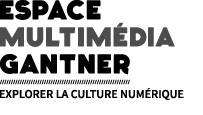Emanuele Braga & Maddalena Fragnito (MACAO) (IT), Simon Denny (NZ), Elisa Giardina-Papa (IT), Sam Lavigne (US), Silvio Lorusso (IT), Jonas Lund (SE), Michael Mandiberg (US), Eva & Franco Mattes (IT), Lauren McCarthy (US), Julien Prévieux (FR), RYBN.ORG (FR), Sebastian Schmieg (DE), Telekommunisten (CA/DE)
Curatrice : Aude Launay
[English and German below]
Alors que de plus en plus de capacités que l’on pensait propres à l’humain sont applicables à des machines, comment penser le travail qui, longtemps, a caractérisé l’homme ? Qu’est-ce que le travail à l’ère numérique mondialisée ? D’un côté, un taylorisme algorithmique grandissant — la division du travail poussée à l’extrême chez les travailleurs du clic —, de l’autre, une illusion machinique persistante — nombre de tâches que l’on pense effectuées par des ordinateurs le sont en fait par des êtres humains, de manière plus ou moins dissimulée. À l’heure d’une gestion algorithmique du management, qu’en est-il de la mesure de la performance et des instruments d’optimisation des travailleurs ? De la fin du salariat comme organisation dominante du travail ? Et puis, dans ce que l’on nomme désormais l’« économie de l’attention », il n’y a pas que les travailleurs qui travaillent : toute activité en ligne est susceptible d’ajouter à l’accumulation de capital des géants du net par sa marchandisation. Toute donnée est monétisable. Tout internaute est générateur de profit. Être en ligne = travailler ?
Algotaylorism regroupe des artistes qui opèrent à la jonction humain-machine et ont pris cette interaction comme sujet de recherche et comme outil de production. Travailler à son insu ; avoir un algorithme pour supérieur ; faire office d’intelligence artificielle et penser une société non centrée sur le travail formeront les différents chapitres de l’exposition. Interventions et performances humaines seront pour cela couplées à des logiciels créés pour l’occasion sous forme d’une appli de commande de livraison d’art, d’un processus de mining écologique d’une cryptomonnaie d’inspiration marxiste et de robots conversationnels au discours troublant.
L’exposition se poursuit avec Algotaylorism: Rage Against the Machine à l’Espace multimédia Gantner.
Retrouvez l’ensemble des rendez-vous autour de l’exposition dans la rubrique Agenda.
Curatrice et autrice indépendante, Aude Launay est philosophe de formation.
Une partie importante de ses écrits et de ses expositions traite de l’influence d’internet et des technologies avancées sur l’art contemporain et la société. Ces dernières années, ses recherches se sont concentrées sur la prise de décision décentralisée par le biais de processus algorithmiques et de blockchains dans le domaine de l’art. Plus généralement, elle s’intéresse à l’art qui interfère avec les mécanismes de pouvoir qui sous-tendent les structures de gouvernance.
[Eng]
While more and more capacities that we thought of as human-specific are applicable to machines, how can we rethink work that has long been considered part of human characteristics? What is work in the globalized digital age? On the one hand, a growing algorithmic Taylorism—the extreme division of labour among click workers—and on the other hand, a persistent mechanical illusion—many tasks thought to be performed by computers are in fact performed by human beings, in a more or less hidden way. In an era of algorithmic management, what about performance measurement and worker optimization tools? What about the end of wage labour as the dominant structure for work? And, in what is now called the « attention economy », it is not only workers who work: any online activity is likely to add to the capital accumulation of Internet giants through its commodification. All data is monetisable. Every Internet user is profitable. Being online = working?
Algotaylorism brings together artists who work at the human-machine junction point and have taken this interaction as a research subject and as a production tool. Working unwittingly; having an algorithm as a boss; acting as an artificial intelligence and envisioning a society not work-centred: so are the different chapters of the exhibition. For its purpose, human productions and performances will be coupled with custom software in the form of an art delivery order application, an ecological mining process of a Marxist-inspired cryptocurrency and conversational robots with disturbing speech.
The exhibition continue with Algotaylorism: Rage Against the Machine at Espace multimédia Gantner…
Aude Launay is an independent writer and curator trained as a philosopher. A significant part of her writings and exhibitions deals with the influence of the internet and advanced technologies on contemporary art and society. In recent years, her research focus has been on crowdsourced and distributed decision-making through algorithmic and blockchain-based processes in art. More generally, she is interested in art that interferes with the power mechanisms underpinning governance structures.
[De]
Immer mehr Fähigkeiten, die man ausschließlich dem Menschen zuschrieb, können inzwischen von Maschinen umgesetzt werden. Wie ist dann das Prinzip Arbeit zu verstehen, das lange kennzeichnend für den Menschen war? Was bedeutet Arbeit im globalisierten Digitalzeitalter? Auf der einen Seite ein zunehmender algorithmischer Taylorismus — Arbeitsteilung ins Extreme getrieben beim Arbeiten per Mausklick — , auf der anderen Seite eine andauernde maschinelle Illusion — zahlreiche Aufgaben, die scheinbar vom Computer, doch in Wirklichkeit vom Menschen durchgeführt werden, auf mehr oder weniger versteckte Weise. Wie sieht es mit der Leistungsbeurteilung und mit Optimierungsmaßnahmen für Arbeitnehmer aus, wenn die Unternehmensführung in Form eines algorithmischen Managements von statten geht? Bedeutet dies das Ende der Lohnarbeit als klassischer Arbeitsform? Nicht nur die Beschäftigten arbeiten bei dem, was man nunmehr „Ökonomie der Aufmerksamkeit“ nennt: Jede Online-Aktivität vermag durch ihre Kommerzialisierung zur Kapitalbildung der Internetriesen verhelfen. Mit allen Daten kann man Geld machen. Jeder Surfer erzeugt Profit. Online sein = arbeiten?
Algotaylorism bringt Künstler zusammen, die an der Schnittstelle zwischen Mensch und Maschine tätig sind und diese Interaktion zu ihrem Forschungsgegenstand und Produktionswerkzeug gemacht haben. Unbewusst arbeiten; einen Algorithmus als Vorgesetzten haben; als künstliche Intelligenz auftreten; eine Gesellschaft entwerfen, die nicht zentral an Arbeit ausgerichtet ist – diese Themen bilden die unterschiedlichen Kapitel dieser Ausstellung. Dazu werden Interventionen und Performances von Menschen mit Software verknüpft, die eigens zu diesem Anlass erschaffen wurden. Sie nehmen unterschiedliche Formen an: eine App für Bestellung und Lieferung von Kunst, ein ökologisches Process-Mining einer Kryptowährung marxistischer Inspiration und Gespräche führende Roboter mit verwirrenden Worten.
Die Ausstellung Algotaylorism: Rage Against the Machine findet im Espace multimédia Gantner…
Die ausgebildete Philosophin Aude Launay ist Kuratorin und unabhängige Autorin.
Ein wesentlicher Teil ihrer Schriften und ihrer Ausstellungen handelt vom Einfluss des Internets und der modernen Technologie auf die zeitgenössische Kunst und die Gesellschaft. In den letzten Jahren haben sich ihre Forschungen auf die dezentrale Entscheidungsfindung durch die Anwendung von Algorithmen und Blockchains im künstlerischen Bereich konzentriert. Allgemein interessiert sie sich für Kunst, die mit den Machtmechanismen interferiert, von denen unsere Führungs- oder Regierungsstrukturen bestimmt sind.
Algotaylorism est réalisée avec la participation du DICRéAM / With the support of DICRéAM / Die Ausstellung wurde durch DICRéAM unterstützt.
Avec ![]()
Mulhouse Art Contemporain est partenaire de La Kunsthalle.

L’exposition bénéficie du soutien de Prevel Signalisation, Rixheim.







